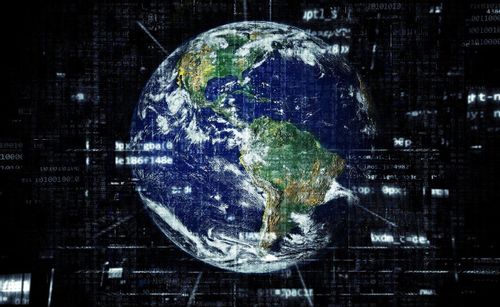ISO/IEC 27050-1:2019
(Main)Information technology — Electronic discovery — Part 1: Overview and concepts
Information technology — Electronic discovery — Part 1: Overview and concepts
Electronic discovery is the process of discovering pertinent Electronically Stored Information (ESI) or data by one or more parties involved in an investigation or litigation, or similar proceeding. This document provides an overview of electronic discovery. In addition, it defines related terms and describes the concepts, including, but not limited to, identification, preservation, collection, processing, review, analysis, and production of ESI. This document also identifies other relevant standards (e.g. ISO/IEC 27037) and how they relate to, and interact with, electronic discovery activities. This document is relevant to both non-technical and technical personnel involved in some or all of the electronic discovery activities.
Technologies de l'information — Découverte électronique — Partie 1: Aperçu général et concepts
General Information
Relations
Standards Content (Sample)
INTERNATIONAL ISO/IEC
STANDARD 27050-1
Second edition
2019-11
Information technology — Electronic
discovery —
Part 1:
Overview and concepts
Technologies de l'information — Découverte électronique —
Partie 1: Aperçu général et concepts
Reference number
©
ISO/IEC 2019
© ISO/IEC 2019
All rights reserved. Unless otherwise specified, or required in the context of its implementation, no part of this publication may
be reproduced or utilized otherwise in any form or by any means, electronic or mechanical, including photocopying, or posting
on the internet or an intranet, without prior written permission. Permission can be requested from either ISO at the address
below or ISO’s member body in the country of the requester.
ISO copyright office
CP 401 • Ch. de Blandonnet 8
CH-1214 Vernier, Geneva
Phone: +41 22 749 01 11
Fax: +41 22 749 09 47
Email: copyright@iso.org
Website: www.iso.org
Published in Switzerland
ii © ISO/IEC 2019 – All rights reserved
Contents Page
Foreword .v
Introduction .vi
1 Scope . 1
2 Normative references . 1
3 Terms and definitions . 1
4 Symbols and abbreviated terms . 4
5 Overall structure and overview of the ISO/IEC 27050 series . 4
6 Overview of electronic discovery . 5
6.1 Background . 5
6.2 Basic concepts . 5
6.3 Objectives of electronic discovery . 6
6.4 Electronic discovery foundation . 7
6.4.1 General. 7
6.4.2 Competency . 7
6.4.3 Candour . 7
6.4.4 Cooperation . 7
6.4.5 Completeness . 7
6.4.6 Proportionality . 7
6.5 Governance and electronic discovery . 8
6.5.1 General. 8
6.5.2 Risk and environmental factors . 8
6.5.3 Compliance and review . 8
6.5.4 Privacy and data protection . 8
6.6 ICT readiness for electronic discovery . 9
6.6.1 General. 9
6.6.2 Long-term retention of ESI . 9
6.6.3 Maintaining ESI confidentiality . 9
6.6.4 Destruction of ESI . 9
6.7 Planning and budgeting an electronic discovery project . 9
7 Electronically Stored Information (ESI) .10
7.1 Background .10
7.2 Common types of ESI .11
7.2.1 General.11
7.2.2 Active data .11
7.2.3 Inactive data . .11
7.2.4 Residual data .11
7.2.5 Legacy data .12
7.3 Common sources of ESI .12
7.3.1 General.12
7.3.2 Custodian data sources .12
7.3.3 Non-custodian data sources .12
7.3.4 Potentially excluded sources of ESI .13
7.4 ESI representations .13
7.4.1 General.13
7.4.2 Native formats .13
7.4.3 Near-native formats .14
7.4.4 Image (near-paper) formats .14
7.4.5 Hardcopy .14
7.5 Non-ESI as part of discovery .14
8 Electronic discovery process.15
8.1 Overview .15
© ISO/IEC 2019 – All rights reserved iii
8.2 ESI identification .17
8.3 ESI preservation .17
8.4 ESI collection .17
8.5 ESI processing .18
8.6 ESI review .18
8.7 ESI analysis .18
8.8 ESI production .18
9 Additional considerations .19
9.1 Presentation of ESI .19
9.2 Chain of custody and provenance .19
Bibliography .20
iv © ISO/IEC 2019 – All rights reserved
Foreword
ISO (the International Organization for Standardization) and IEC (the International Electrotechnical
Commission) form the specialized system for worldwide standardization. National bodies that
are members of ISO or IEC participate in the development of International Standards through
technical committees established by the respective organization to deal with particular fields of
technical activity. ISO and IEC technical committees collaborate in fields of mutual interest. Other
international organizations, governmental and non-governmental, in liaison with ISO and IEC, also
take part in the work.
The procedures used to develop this document and those intended for its further maintenance are
described in the ISO/IEC Directives, Part 1. In particular, the different approval criteria needed for
the different types of document should be noted. This document was drafted in accordance with the
editorial rules of the ISO/IEC Directives, Part 2 (see www .iso .org/ directives).
Attention is drawn to the possibility that some of the elements of this document may be the subject
of patent rights. ISO and IEC shall not be held responsible for identifying any or all such patent
rights. Details of any patent rights identified during the development of the document will be in the
Introduction and/or on the ISO list of patent declarations received (see www .iso .org/ patents) or the IEC
list of patent declarations received (see http:// patents .iec .ch).
Any trade name used in this document is information given for the convenience of users and does not
constitute an endorsement.
For an explanation of the voluntary nature of standards, the meaning of ISO specific terms an
...









Questions, Comments and Discussion
Ask us and Technical Secretary will try to provide an answer. You can facilitate discussion about the standard in here.